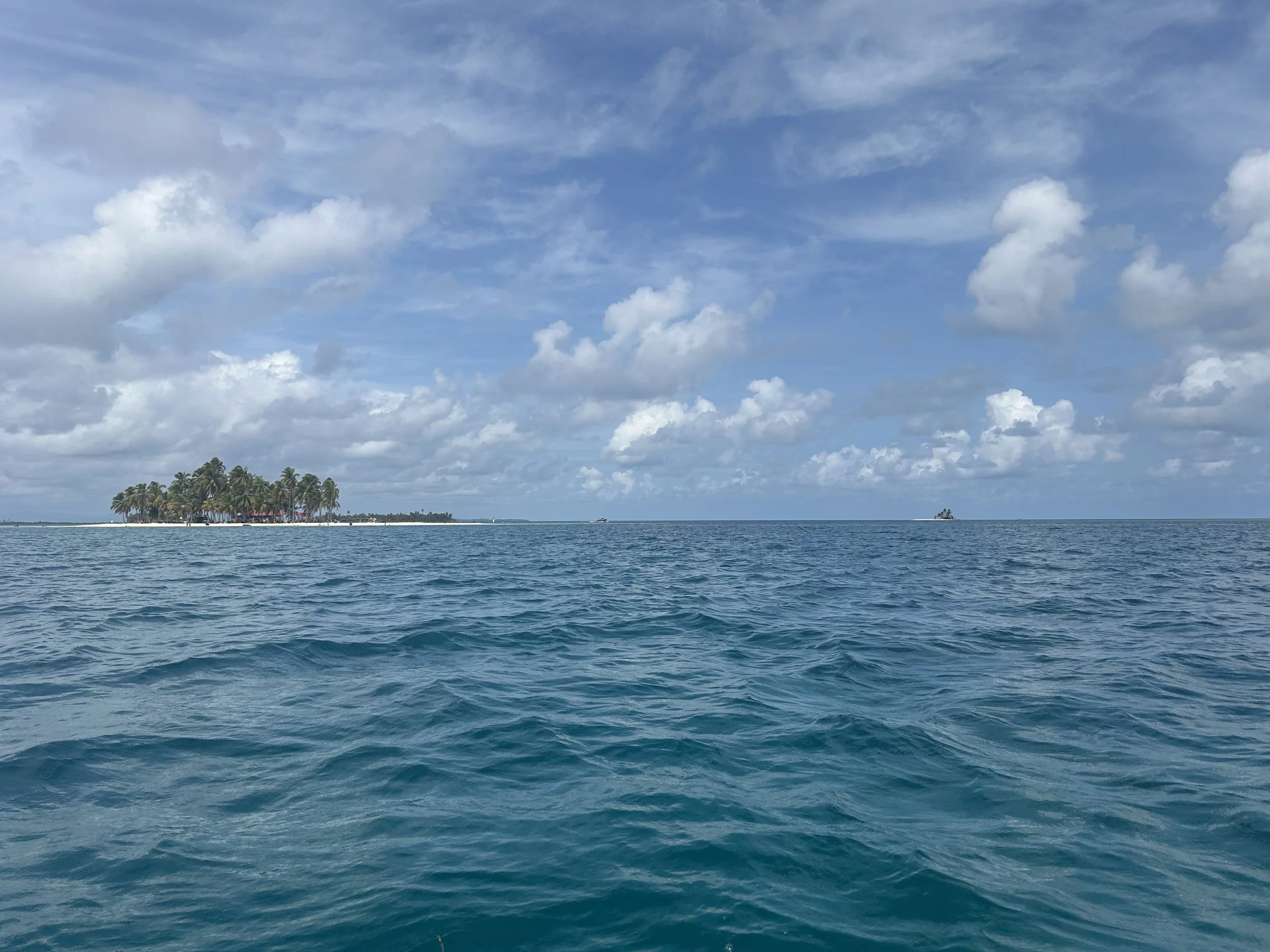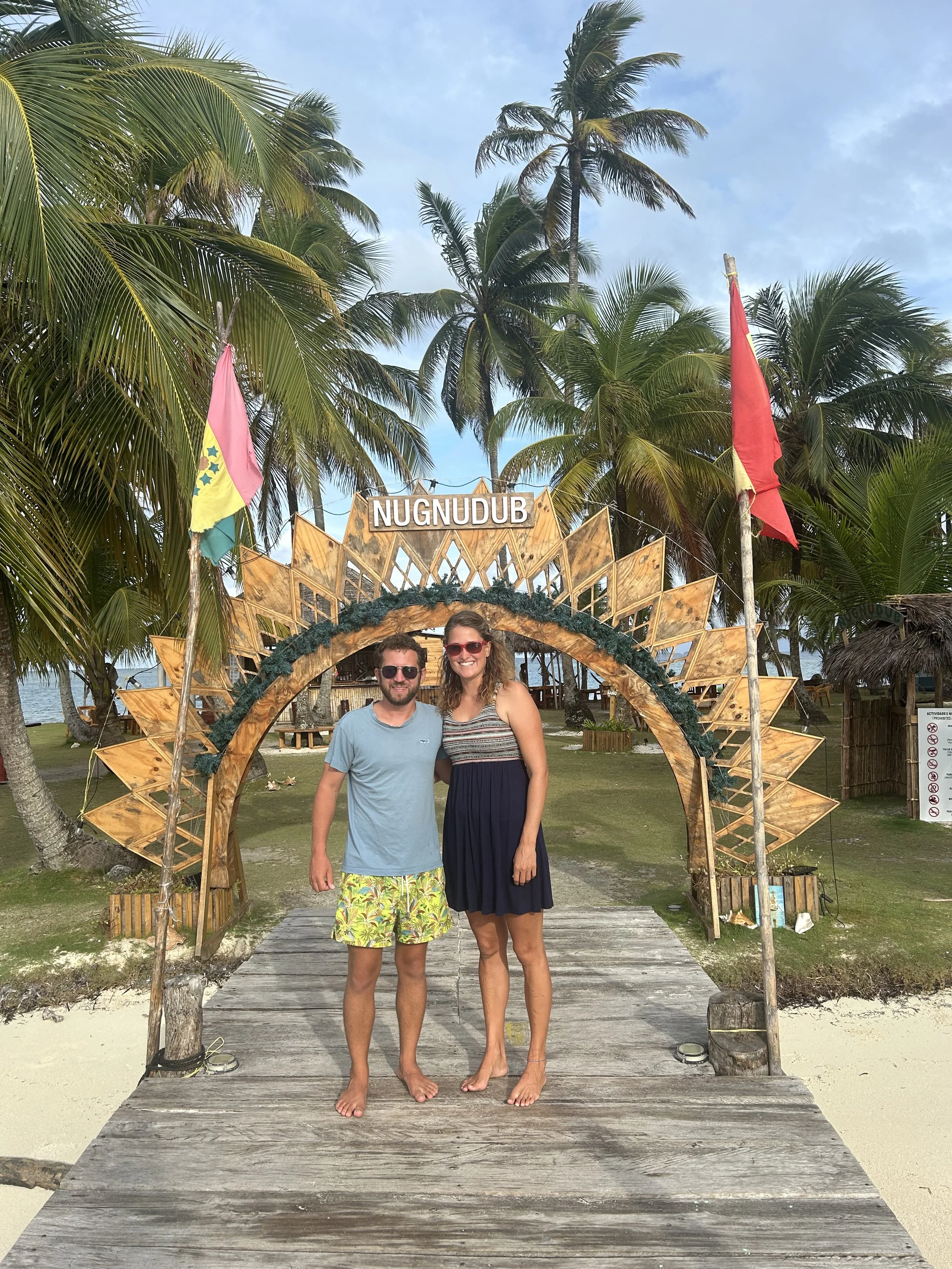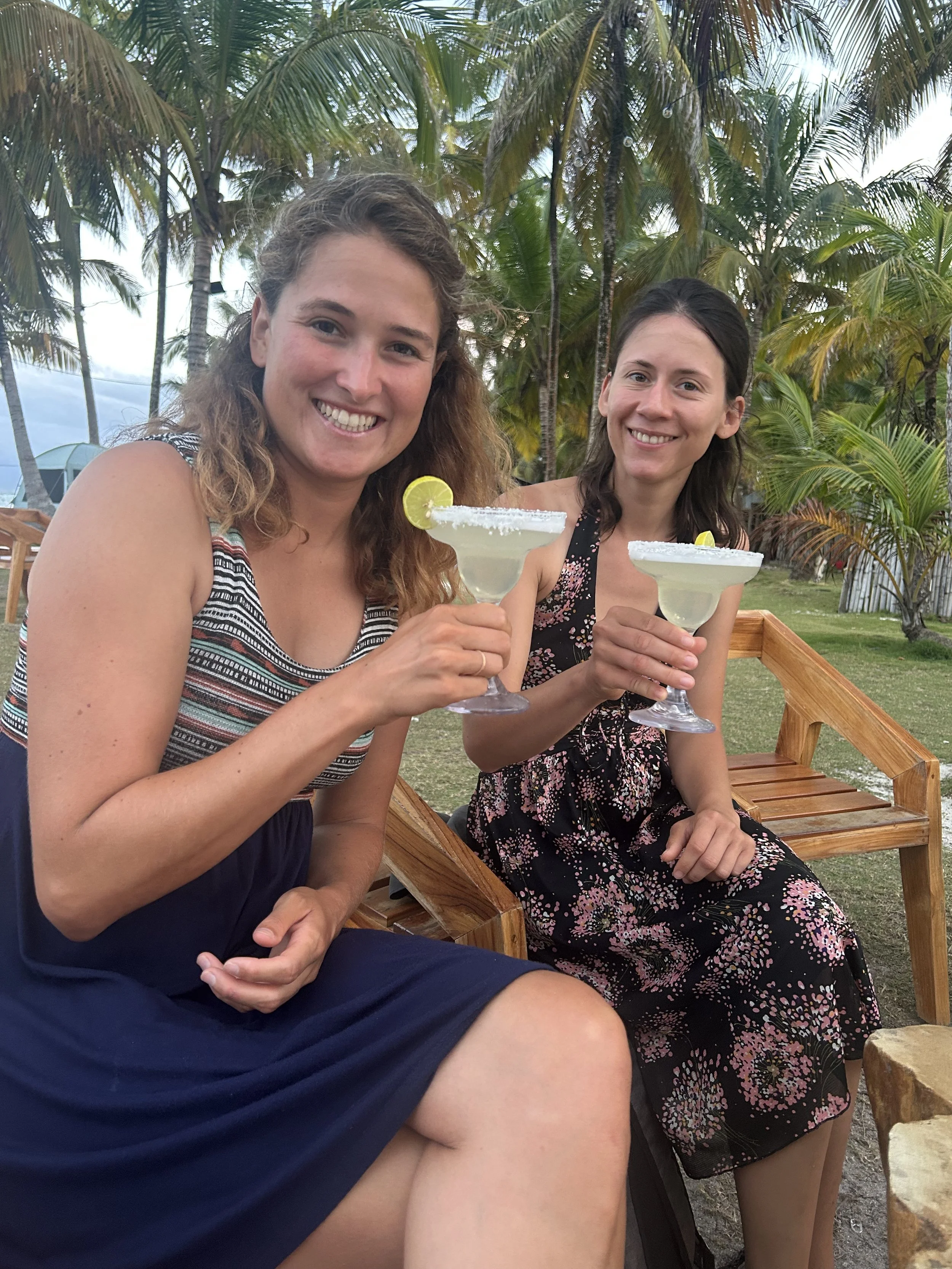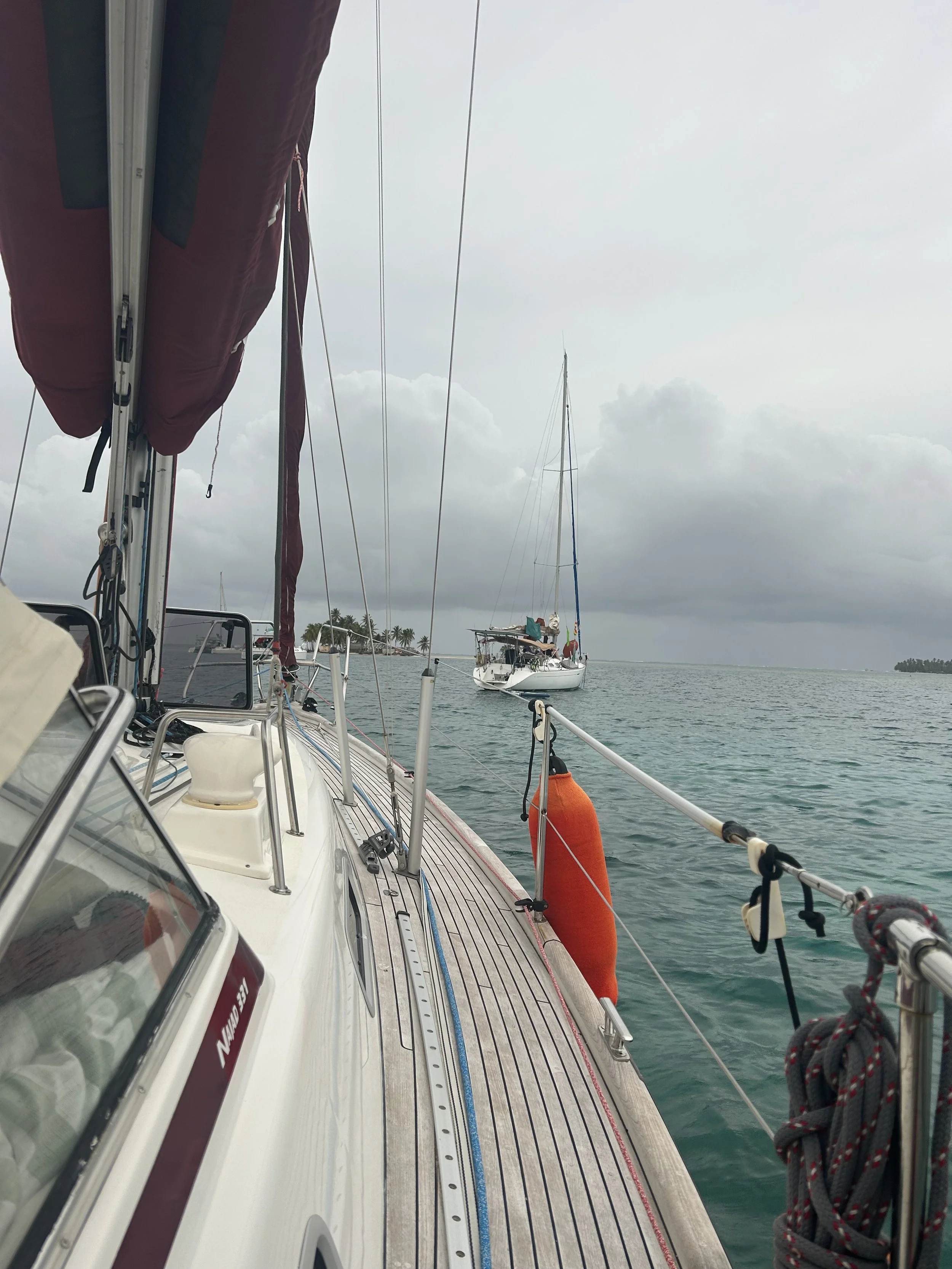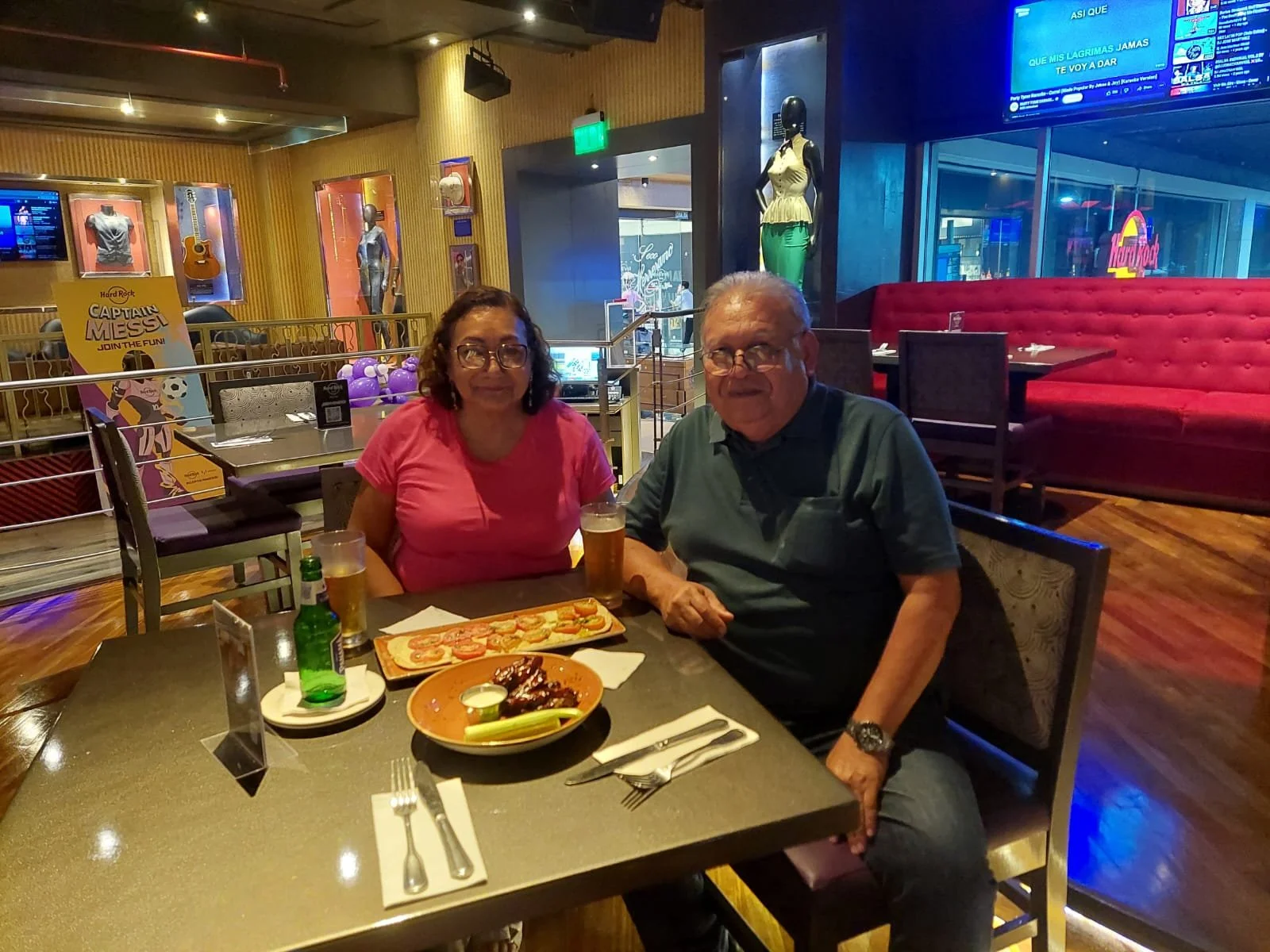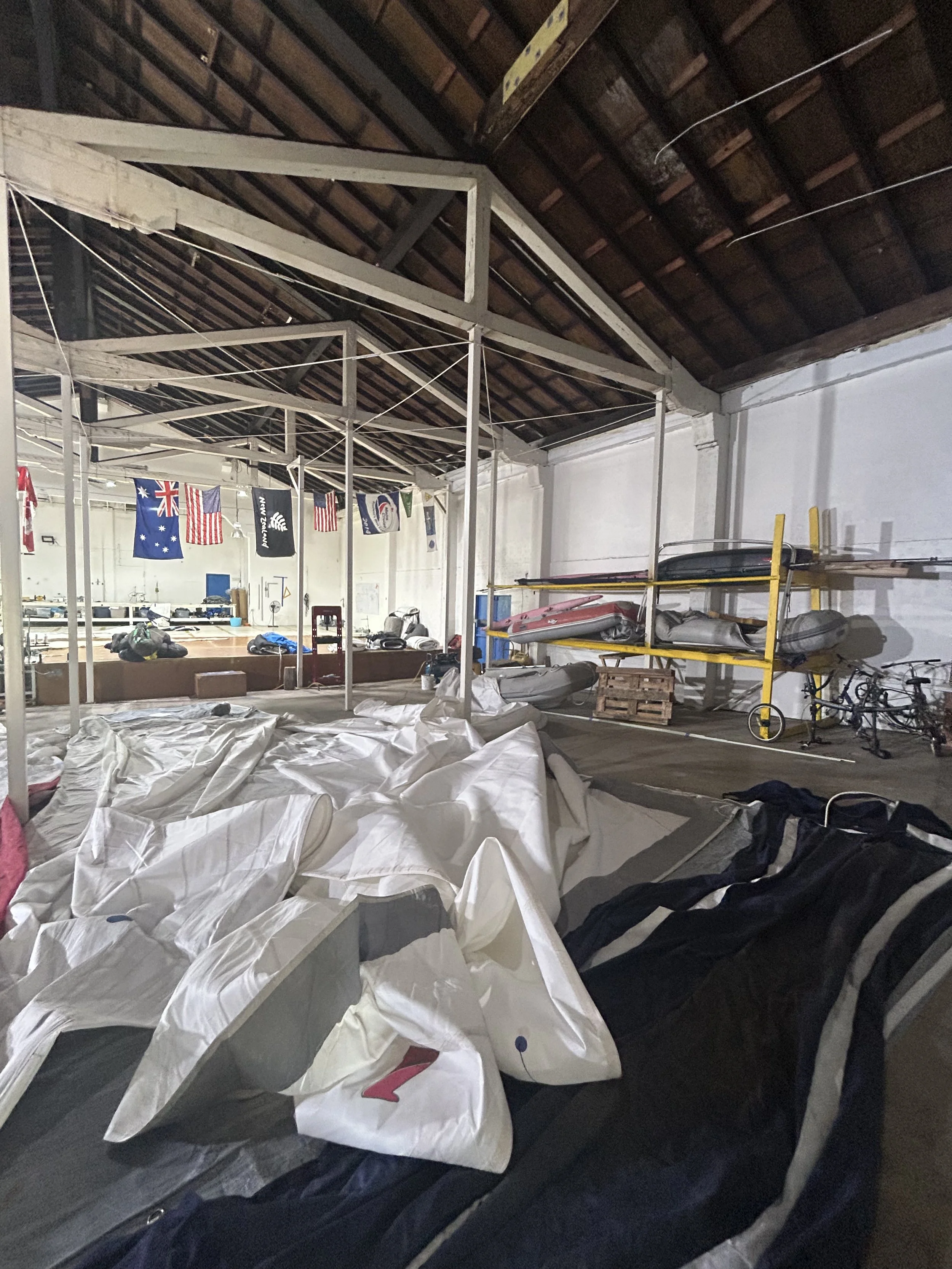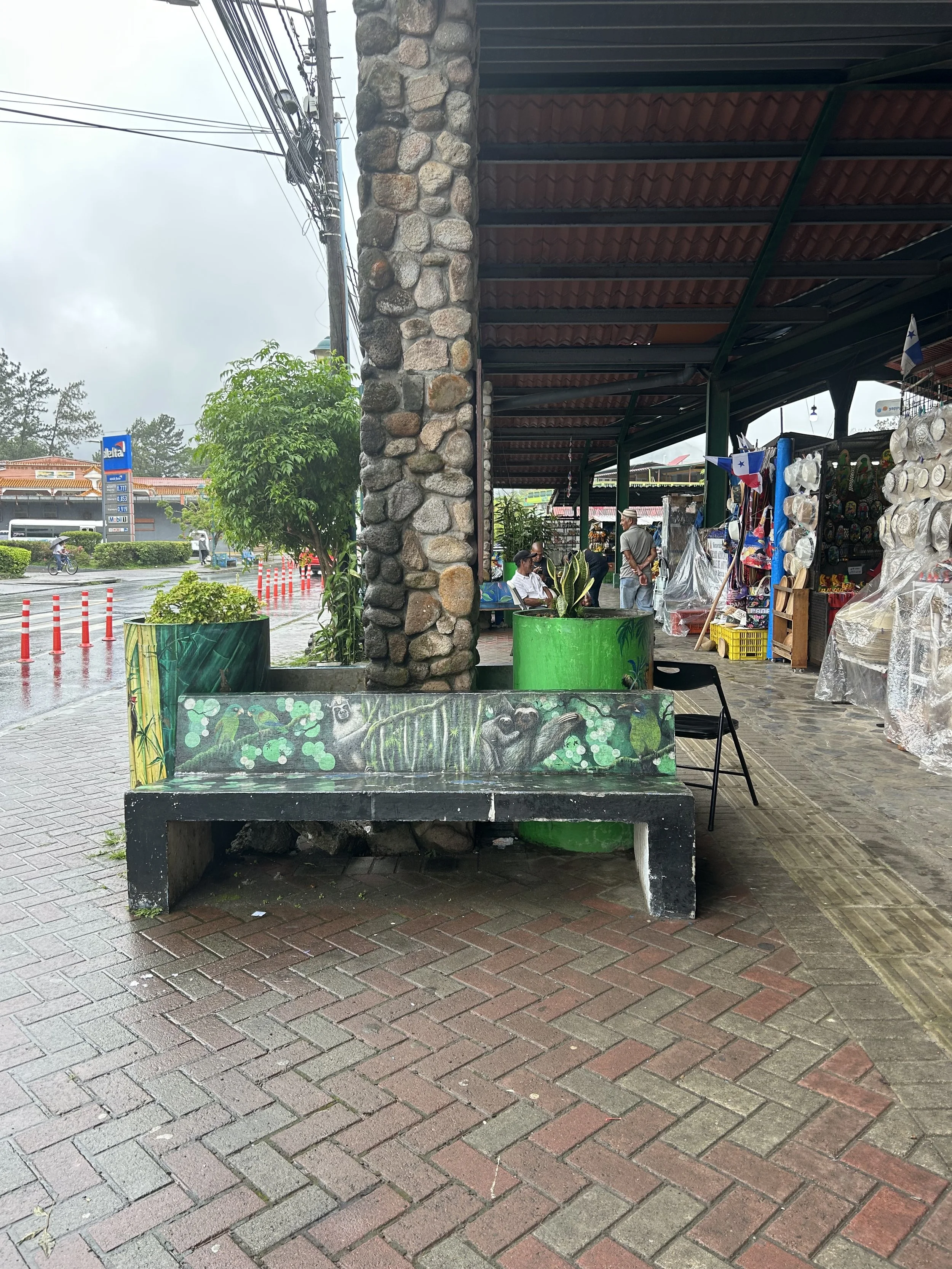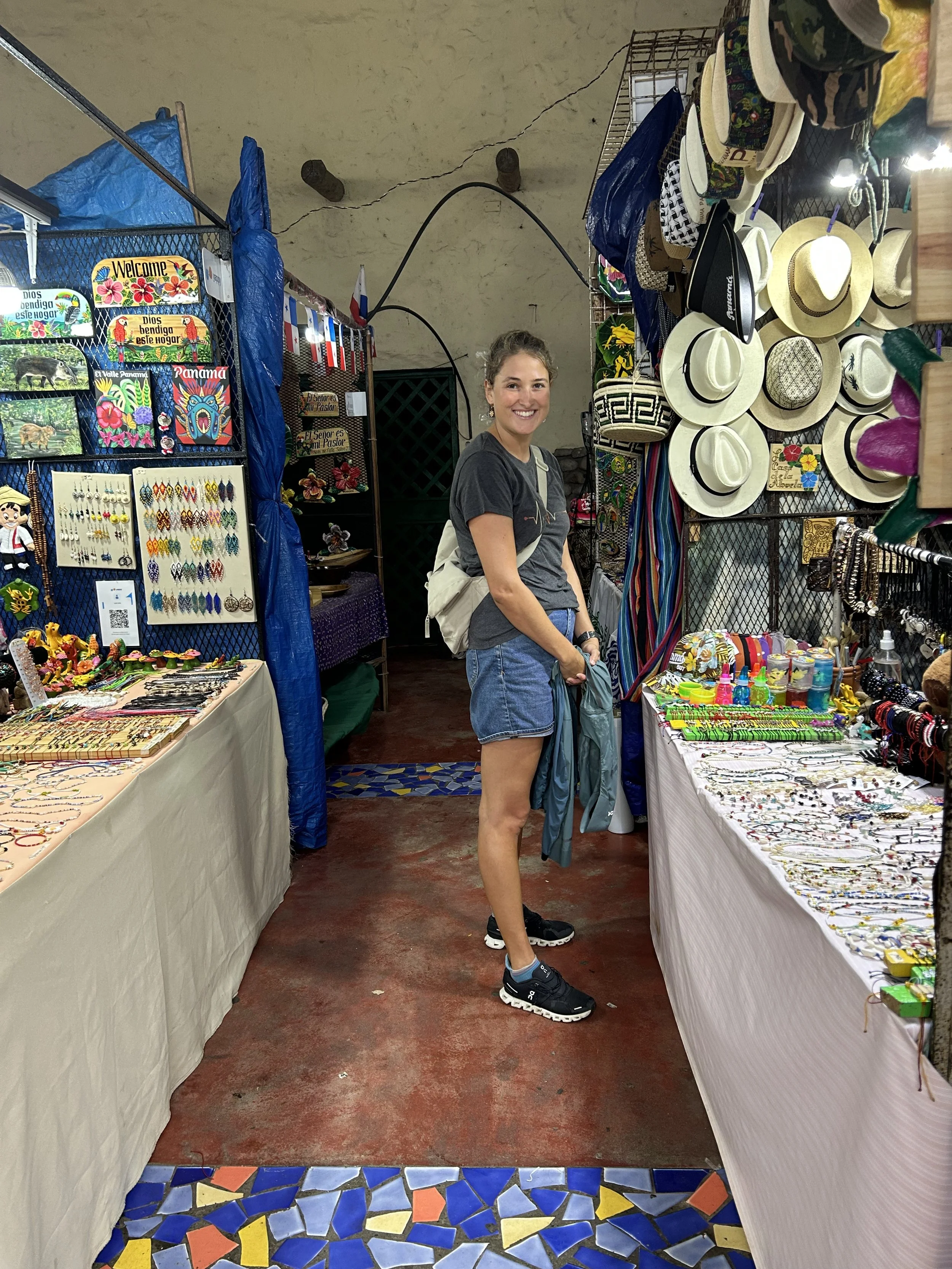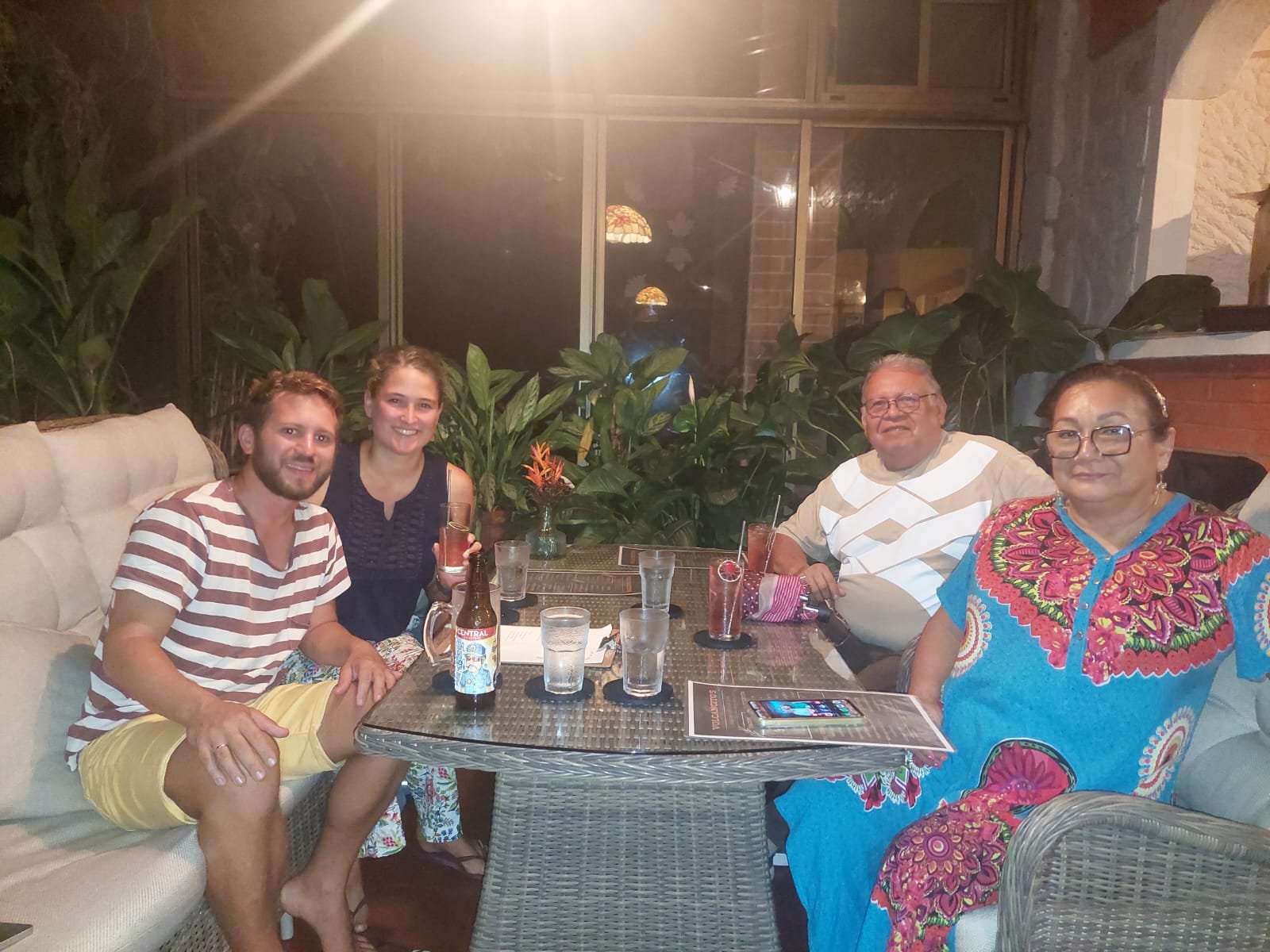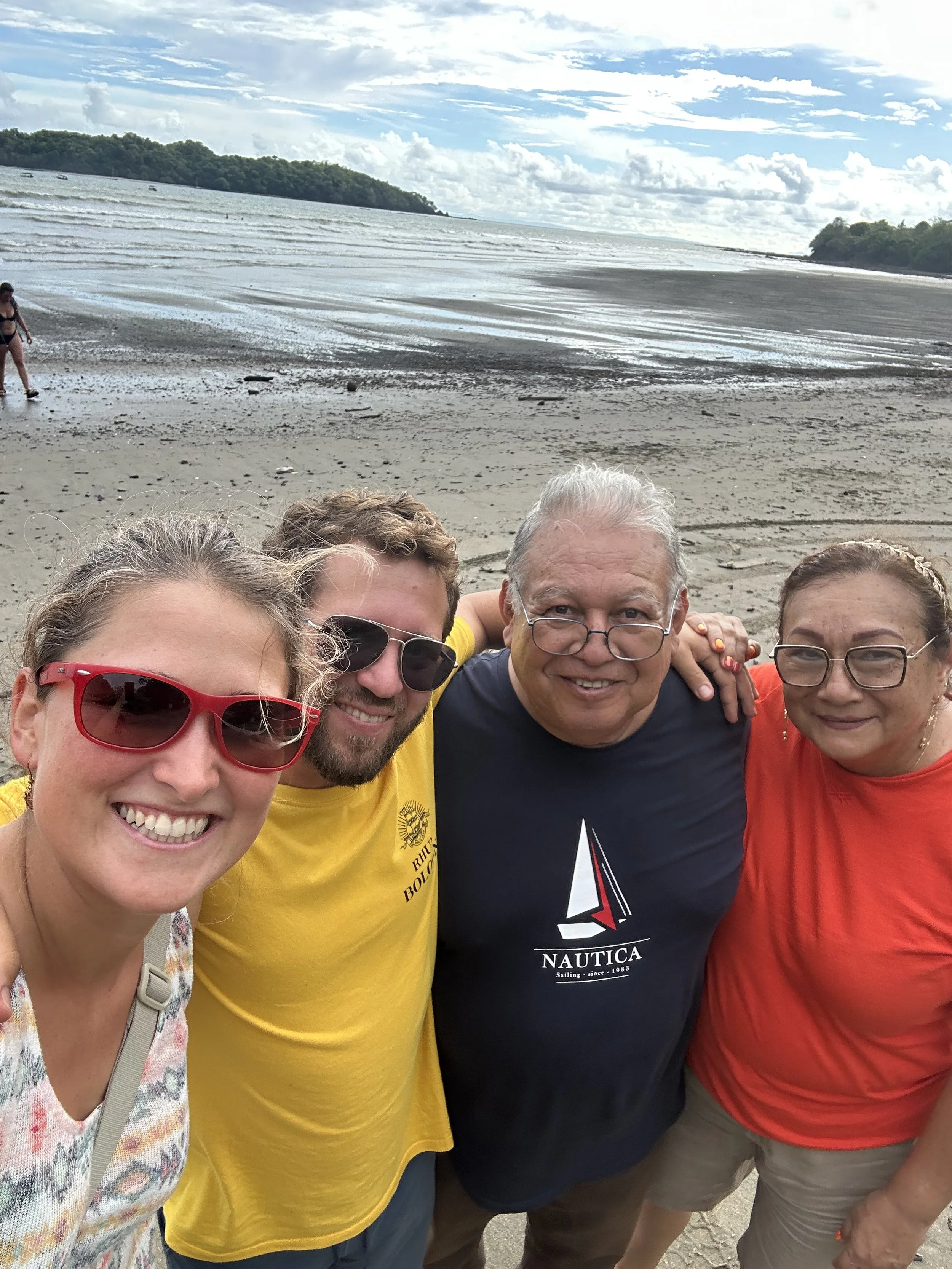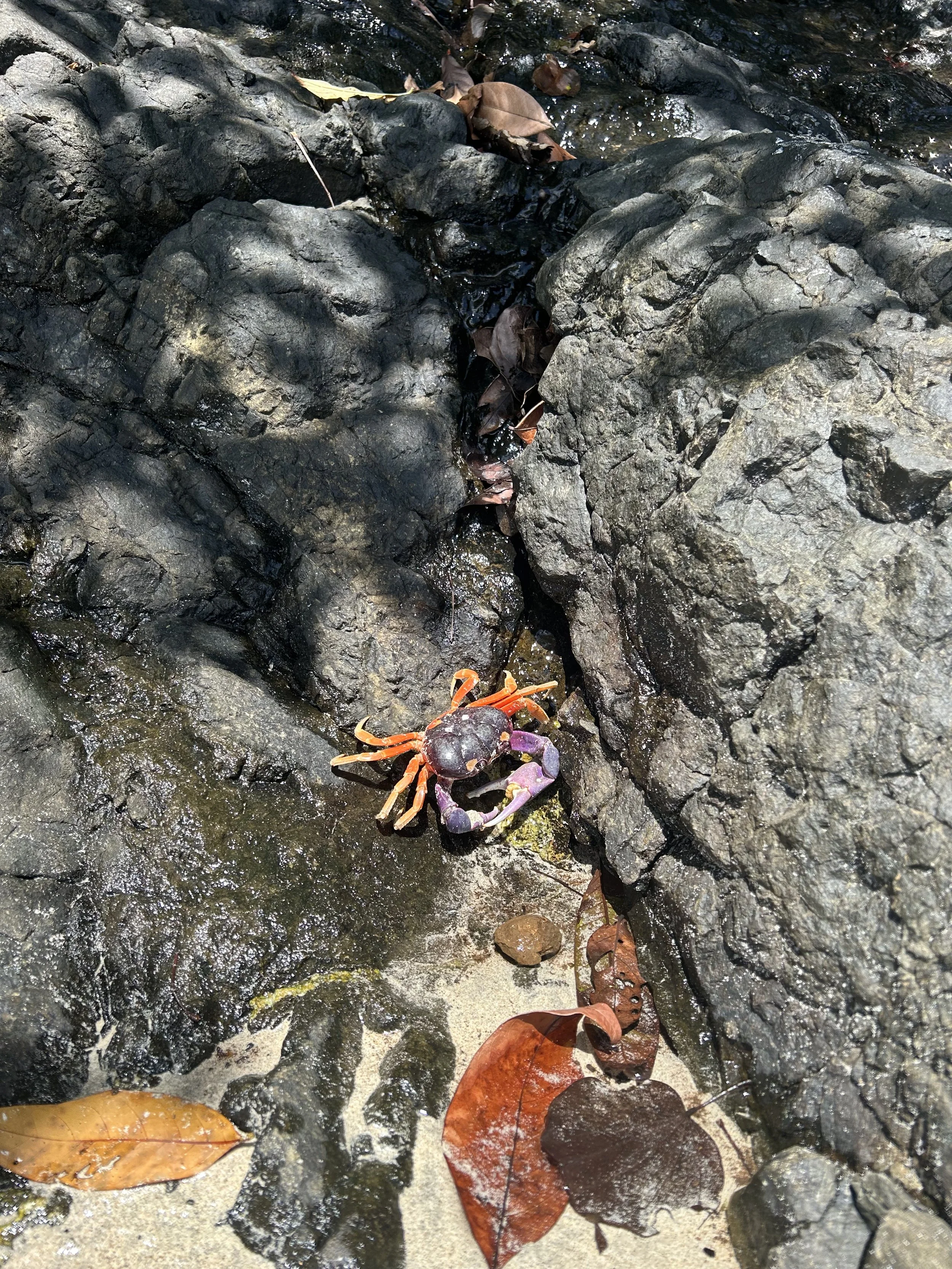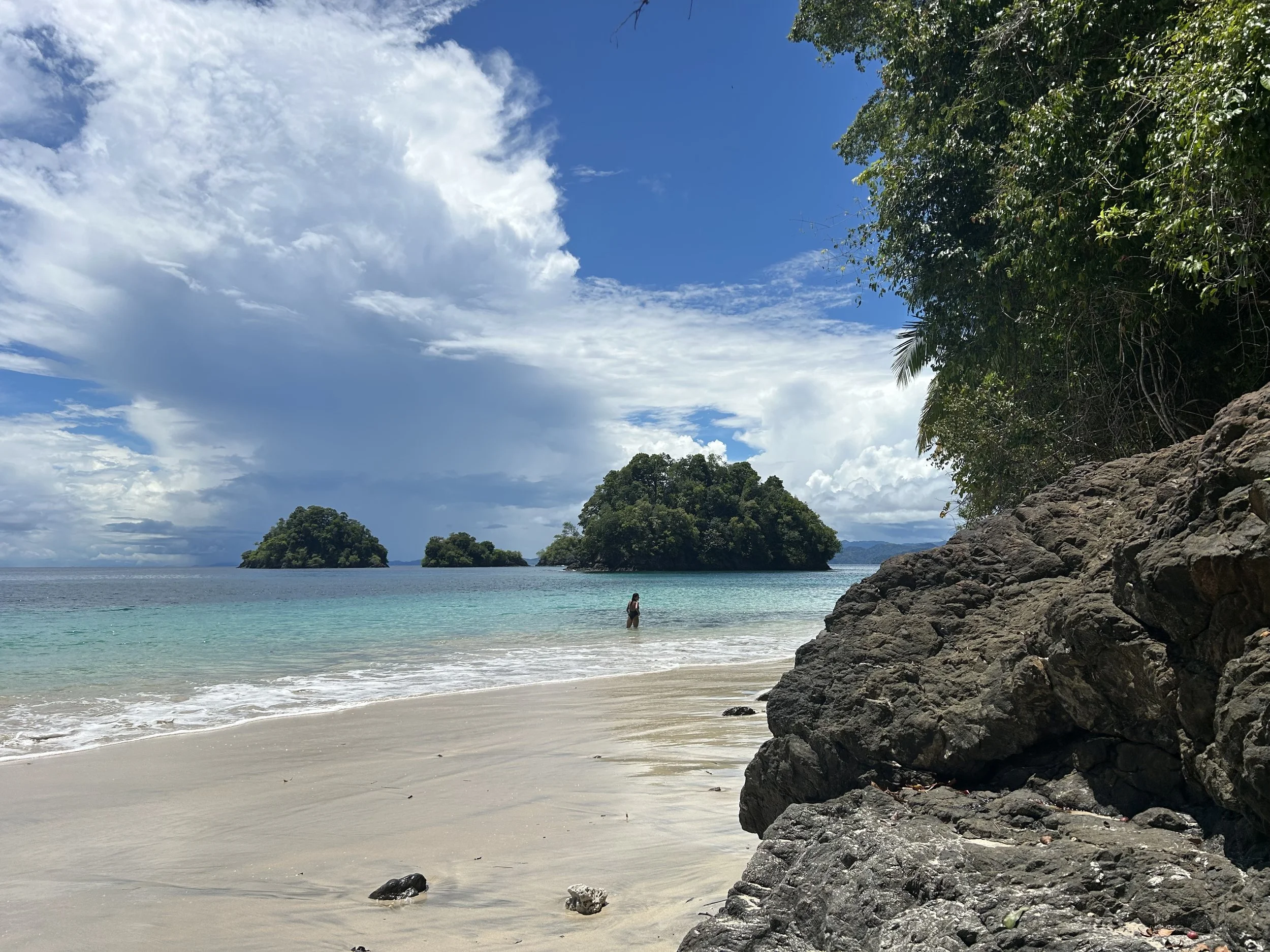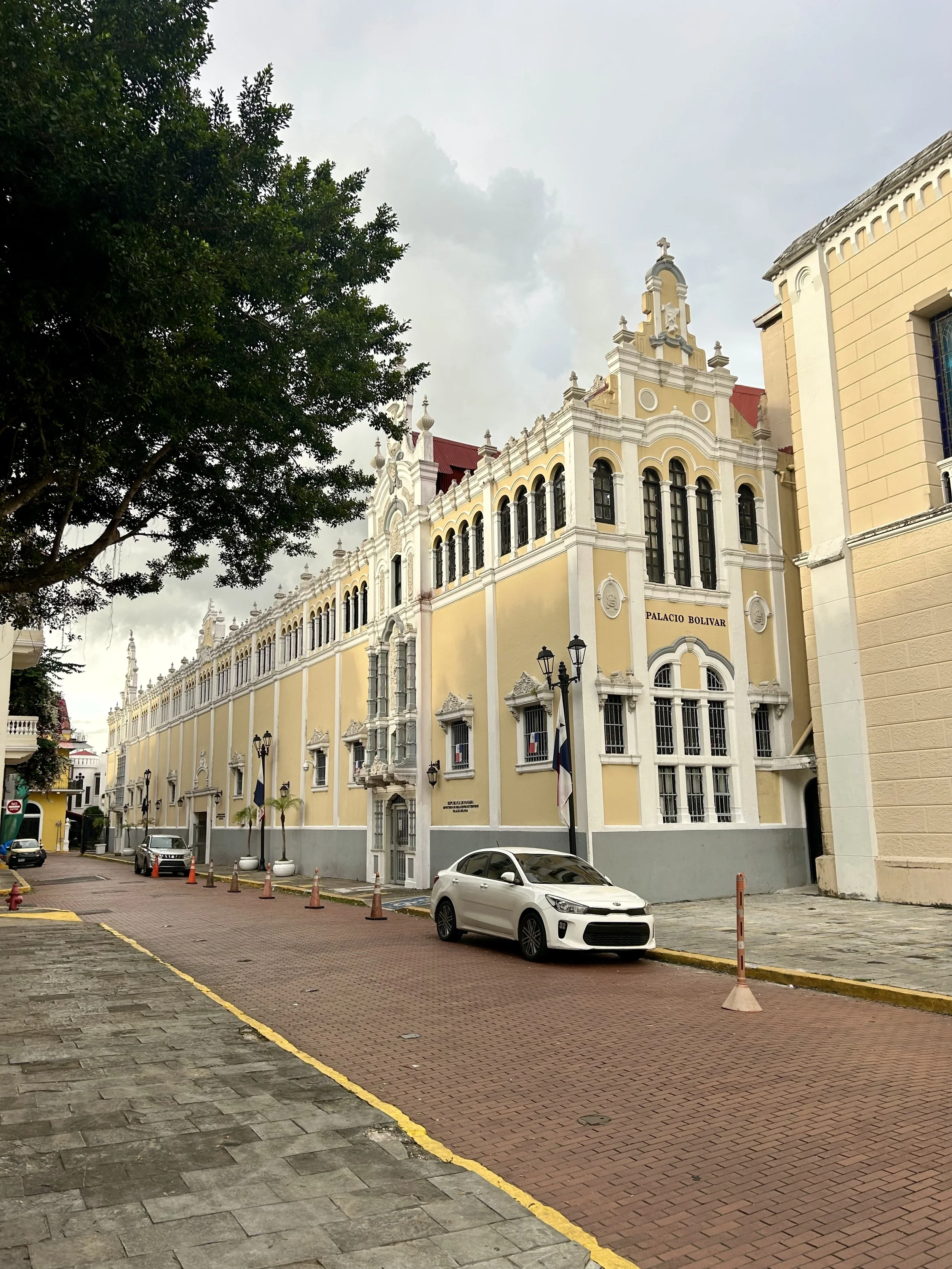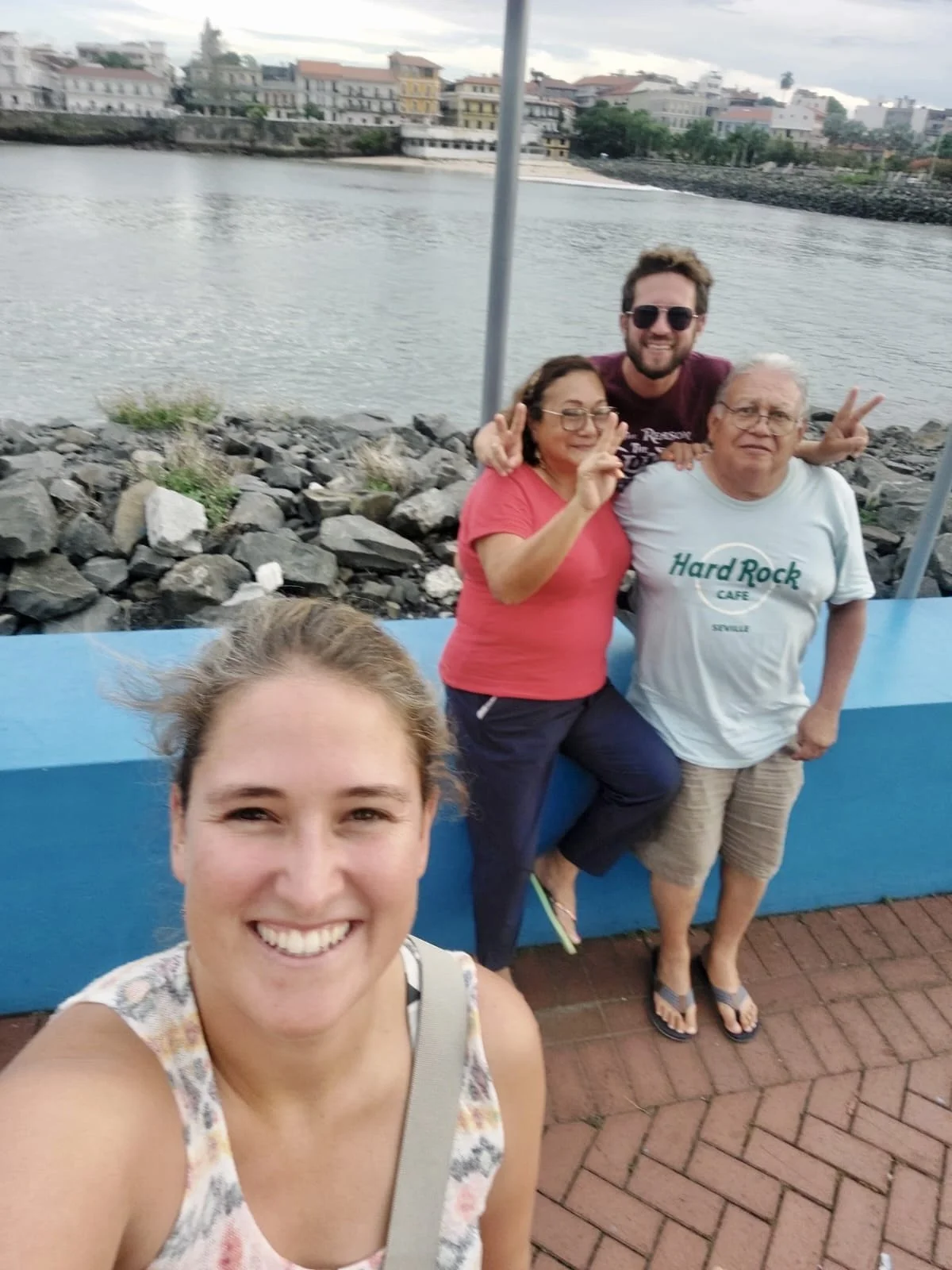Oh, how lovely Panama is
After a quick 5-day crossing from Curaçao to Panama, we arrive in the San Blas Islands with the first rays of sunshine in the morning and drop anchor off the island of Porvenir. We plan to spend the next few days on the San Blas Islands. These belong to the autonomous region of Guna Yala. The indigenous people, known as the Guna, have long fought for autonomy for the coastal region. We are currently at the westernmost point of this region, which extends eastward for about 180 km to Colombia.
San Blas
Even before we drop anchor, several locals come over in a dugout canoe and want to sell us jewellery, colourfully embroidered fabrics called mola, and fruit. We only buy a hand-sewn flag from Guna Yala. It resembles a vertically striped Spanish flag with a swastika turned to the left. This is supposed to represent the octopus that created the world. Later, we find out that there has been a new flag for 15 years (they wanted to sell us that one too, but we didn't understand why we would need two flags) and both flags are omnipresent on the islands.
After breakfast, we clear customs on the small island of Porvenir, which consists mainly of palm trees and an airstrip. As long as you have cash with you (in Panama, you pay with US dollars), this is a very quick and straightforward process. Back at the boat, we immediately weigh anchor and motor 5 nautical miles east to the West Lemon Cays in just under an hour. We sail between many small islands and reefs. The islets are really kitschy with palm trees and sandy beaches, just as you would imagine. Off Nugnudub, we drop anchor in only 3 metres of water. Peter dives down to check that the anchor is well dug in and immediately spots a nurse shark. We are looking forward to snorkelling! But first, we jump into the turquoise water to cool off and then make sushi from the bigeye tuna caught during the crossing. Next to our boat, an eagle ray jumps out of the water several times. We enjoy the afternoon in the bay and spend a cosy evening on the boat – we are all a little tired from the crossing.
The next day, we snorkel at the nearest reef and see an eagle ray, a nurse shark, barracudas, squid and many smaller colourful fish. The reef is reasonably intact, although many corals appear to be affected by a disease that is slowly spreading across the corals. In the late afternoon, we take the dinghy to Nugnudub Island. There we pay $3 per person for admission and can use the hammocks and, in theory, the island's volleyball court. We take a walk around the island, which takes 5 minutes, and then order margaritas as a sundowner. There isn't much going on, probably because everyone is still tired from the party the day before and most of the tourists have already left. We stay for dinner and order baked fish and chicken with plantains before heading back to the boat.
The next day, we grab the dinghy and sail 1.5 nautical miles to a few islands further on. We want to visit a half-sunken wreck, parts of which still protrude from the 1.5–2 m deep water. The sand is white and the water clear and turquoise. Corals of all colours and shapes are already growing on the wreck, and all kinds of small colourful fish are darting around between them.
We actually want to go snorkelling a little north of our anchorage, but the weather is a bit unsettled. So we head back towards the boat and stop at a small restaurant on one of the islands on the way. There we sit out the rain with a Coke and a beer, watching the children playing in a puddle and Romana throwing sticks for the dog. When we decide to go to the snorkelling spot after all, it starts to rain again. Oh well, we think, we'll be wet anyway when we go snorkelling. We don't find the reef we're looking for, just a sandbank in the middle of deeper water. We snorkel there in water that is only 30 cm deep in places. We see several hand-sized starfish, make friends with small fish and watch a fish defend its home, a large shell. Back on board, we eat the last of our tuna.
The next day is already Romana's last on board Vaquita. It keeps raining heavily, so we play The Game before she is picked up by a tour boat in the afternoon and then travels overland to Panama City. Thank you for your support during the crossings, Romana!
We take advantage of the cloudy, partly rainy weather and spend the next two days polishing the cockpit and deck superstructure, tidying up, sorting and taking inventory of the food.
Then we continue overnight to Colón (also known as Cristobal, named after Christopher Columbus – Cristobal Colón in Spanish). In the afternoon, we weigh anchor and wind our way between islands and reefs back out to the open sea. There is little wind, until it dies down completely during the night. We motor most of the way until we arrive outside the Colón pier at 7 o'clock in the morning. This is also the entrance to the Panama Canal, which is why countless large tankers and container ships are anchored in front of it. We radio Cristobal Signal Station and ask for permission to pass through the breakwater, as our marina is located directly behind it. Fortunately, there is not much ship traffic at the moment and we are allowed to pass through. It starts raining again and we are both completely wet by the time we moor at Shelter Bay Marina.
Shelter Bay Marina & Colón
There we meet old acquaintances from Almerimar again. Janine and Micha from the Seven, whom we last saw in Lanzarote, and Moni and Olaf from Belle Amie. We spend the next few days doing boat work, shopping, tidying up and enjoying a beer or two with our friends, as we are all conveniently moored at the same place. We realise that a new chapter is about to begin when we have to fit five completely full shopping trolleys first into our hire car and then on board. After stowing everything away, the boat is sitting a good bit lower in the water, just like it did before the Atlantic crossing.
Before we continue, however, Peter's host parents José and Ana Silvia from Mexico are coming to visit us for a week. Peter lived with them for a year during his school days. The first two days, the two of them are staying in Colón while we finish a few things on board. In the evening, we go out for dinner together. Colón is really run down and probably quite dangerous. We don't feel particularly comfortable and are glad to be travelling in a rental car. The only ‘nice’ and safe place is a shopping centre in the Zona Libre, the tax-free zone. After dinner, we head back to the marina, which is on the other side of the canal. We cross the imposing Atlantico Bridge again. The road to the marina after the bridge goes through the jungle and there are countless cars on the side of the road and even more people armed with buckets, sticks and tongs. It turns out that they are hunting blue land crabs that have fled their burrows due to the persistent rain.
The next day, José and Ana Silvia come to the marina and we go on a jungle tour with Carlos. Where the marina is today used to be a US Army base called Fort Sherman. The base was built at the same time as the Panama Canal to protect it. Carlos explains that today's sailmaker's workshop used to be the old cinema. We go a little further into the jungle, where we see blue land crabs, a huge trail of leafcutter ants and all kinds of plants. We hear the ‘barking’ of howler monkeys again and again, but we don't see any. Then we continue on to the dilapidated church and then to the old bunkers. There we see white-shouldered capuchin monkeys frolicking in the trees. Back on board, we make Mexican food: chicken with mole, a spicy sauce, and rice.
El Valle de Antón
The next day, we start our road trip and our first stop is the mountain village of El Valle de Antón, three hours away. We spend the night there in a very nice hotel. Unfortunately, the weather is not very cooperative and it rains almost all day. We are unable to go on any of the planned hikes. Instead, we drive to the El Valle Amphibian Conservation Centre Foundation (EVACC). There we can see all the amphibians found in Panama, such as poison dart frogs, red-eyed tree frogs and Panama's national animal, the ‘Rana dorada’ or ‘golden frog’. This frog species is only found in Panama and a few mountain regions, but unfortunately, the population in the wild has fallen dramatically due to deforestation and disease, and it is now considered extinct in the wild. However, it can be successfully bred at the Conservation Centre, so the species is not yet completely extinct. Next, we hit the market and go souvenir hunting. There are many nice handmade items such as jewellery, painted wooden plates, magnets and, of course, the Molas of the Kuna.
In the evening at the hotel, I discover Janosch's children’s book ‘Oh, how beautiful is Panama’ in German and read once again the story of the little bear and the little tiger with his tiger duck. The two hear about the most beautiful place in the world – Panama – where everything is supposed to be more beautiful and bigger than at home. They make a signpost and set off for Panama, only to return to their house after a long journey, which they do not recognise. The trees are taller than at home (as they have grown in the meantime) and they find their own signpost with the inscription Panama, but mistake it for a place name sign. They repair the house and are happy to finally be in the land of their dreams.
The next day, the sun finally shines again and we drive to a viewpoint, where we realise that the entire village of Valle lies in a huge volcanic crater. We then continue southwest to Santa Catalina. After a 4.5-hour drive, we arrive at our small, charming hotel on the beach in the late afternoon.
Santa Catalina & Coiba
Unlike the Caribbean side, the Pacific side is not quite as beautiful in terms of beaches. It reminds us a little of the Gulf of Mexico with its dark beach and almost brown sea. After a late lunch, we set off for the town of Santa Catalina. Okay, town is a bit of an exaggeration. Santa Catalina is a collection of diving and surfing schools with a few hostels and restaurants in between. There, we arrange a diving trip for Peter and me for the next day and go back to the beach, which also looks rather unattractive here. Another big difference to the Caribbean side is the tidal range, which is several metres here in the Pacific.
After a quick breakfast at the hotel, we head to the diving school early in the morning. There, we take a small boat for an hour to diving spots in Coiba National Park, one of the largest marine national parks in the world. Dolphins accompany us on the way to the diving spots. We know that diving here is supposed to be different than in the Caribbean. There are no colourful coral reefs, the water is not as clear, but the fish on this side are said to be much larger. The chances of seeing white tip sharks, bull sharks and even whale sharks here are quite good. We are excited. We notice the difference right from the first dive. We can't see more than 5 metres ahead, what a contrast to the crystal-clear waters of the Caribbean. It is rocky everywhere and there is hardly any coral. As soon as you dive a little deeper, 15-20 metres, you reach the layer where the warm water layer at the surface (almost 30 °C) mixes with the ‘cold water layer’ (24 °C). In this layer, everything shimmers like over a campfire and you can hardly see anything. Despite everything, it is a great dive. We see huge schools of fish and a yellow frogfish, which at first glance looks like a sponge as it is wedged between the large rocks. We also see several whitetip reef sharks lying on the sandy bottom. It is the only species of shark that does not have to move to breathe. All other shark species have to swim to flush their gills with enough water. We are already thrilled after the first dive and look forward to the next ones. Before that, we land on a small, picturesque sandy beach on a jungle island and eat a freshly cut pineapple.
At the next dive site, things happen in quick succession. We are barely five minutes in the water, a whale shark swims leisurely a short distance ahead of us. We swim as fast as we can to catch up, but we can hardly close the gap. It is incredibly impressive how large the fin alone is and how slowly it moves from left to right. After a minute, we are completely out of breath and have to pause briefly to catch our breath. As we slowly continue swimming, we discover blacktip sharks and swim after them. Our guide Cedric also spots the tail fin of a bull shark, so we kneel in the sand, remain quiet and wait. In my head, I can already hear the music from Jaws, but the bull shark doesn't show up. We probably weren't quiet enough; sharks don't particularly like bubbling divers. We swim on, seeing white tip reef sharks again and again. Peter likes to have fun and see how close he can get to the resting sharks before they swim away annoyed. Towards the end of the second dive, we see huge schools of fish swimming like a whirlpool and have to manoeuvre our way from rock to rock through the current. At the end, the bull shark reappears and we catch a glimpse of its tail fin in the murky water. This was definitely one of the most eventful and spectacular dives we have ever done.
We land on one of the islands again and eat our lunch on a paradise beach. There we see some land crabs and iguanas. Then we go back into the water. Once again, we see white tip reef sharks and swim with two hawksbill turtles for several minutes. The only thing we didn't see on our diving trip was a manta ray, but you have to save something for future dives.
Panama City
The next day, we head back to the boat. However, we make a stopover in Panama City. We are surprised by how many modern skyscrapers there are here, as the rest of the country does not give any indication of this. The old town, called Cacso Viejo, is located on a peninsula in front of the modern city. The houses have been lovingly renovated in recent years and there are many good restaurants and shops. We stroll through the alleys, look at the church and enjoy the view of the water and the skyscrapers. In the evening, we go out for dinner with Peter's host parents one last time and celebrate Ana Silvia's birthday in advance. Then we drop them off at the hotel, say goodbye and return to the boat.
After a short night, we pack everything up because we are going to Austria for two weeks to visit my sister's wedding. After a 9.5-hour flight, we are already in Madrid, and from there it is only three hours to Vienna. We are no longer used to travelling so quickly, and it feels strange to be back home. We meet friends and family, enjoy the beautiful places in Austria and the advantages of a large bed, unlimited water, a washing machine and a dishwasher. Time flies by, as we are out and about a lot. At the end of our visit, the wedding is on the agenda. It is a beautiful ceremony in the castle gardens of Spitz, followed by a lavish celebration, as it should be. We are a little wistful to be leaving again two days later. Just like in the book ‘Oh, How Beautiful Panama Is,’ sometimes you have to leave to appreciate your beautiful home. The boat is far away in our thoughts and we know what work awaits us there, as the next two adventures, first the Panama Canal and then the Pacific crossing, are on the agenda...
Useful tips:
We spent more time in Panama than planned and found it to be a diverse and exciting country. The infrastructure is good, but for some things you just need to know how they work. We will keep the specific tips brief here, as there are two excellent collections for everything you need as a sailor. One is a document for the Caribbean side, which contains everything about Shelter Bay, and the other is for the Pacific side around Panama. There you can find out how to get through the canal, where to get what you need, how to get around and what sights to see. That's much more than we can write down here. The most up-to-date documents can be obtained from Debbie, the administrator of the Shelter Bay WhatsApp group. Here is her number: +507 6418 6407.
We cleared customs in Porvenir on the San Blas Islands, which is fairly straightforward. You should take plenty of cash in US dollars with you, as you cannot withdraw cash on San Blas and card payments are rare. In Porvenir, people are happy to chat and help you. You don't really need this help, as the clearance process is pretty simple. First, get the cruising permit for San Blas at the Guna Yala Quartier, then have your passports stamped at the Immigration Office in the neighbouring building. We gave our ‘helper’ a small tip of 2 USD. In San Blas, there can be heavy thunderstorms and rain during the rainy season. The rainy season starts in April and peaks around August and September. It rains less on the Pacific side, but still regularly, and mould becomes a constant companion during longer stays.
We explored the hinterland with a car that we rented from Thrifty in Shelter Bay Marina. Car prices should be taken with a grain of salt, as everything is quoted without insurance (including liability insurance). In the end, we paid about 60 USD per day, including all insurance. If you want to rent a car in Shelter Bay, you can either do so online via Thrifty Panama or directly at the small shop in the marina. In any case, you should talk to the lady there about what you have booked and when the car will be available to avoid waiting times.
Carlos offers free tours of the Fort Sherman grounds in Shelter Bay Marina. He explains some of the history and nature of the place; this tour is highly recommended. You can find him in the small gatehouse at the entrance to the marina next to the Segelloft or simply contact him via WhatsApp:
+507 6449 4066Panama also offers plenty of hiking opportunities in nature, e.g. in Valle de Anton.
Diving in Coiba has been one of our favourites so far and we can absolutely recommend it. We dived there with Panama Dive Centre. The prices are relatively high and almost the same at all diving schools (145 USD for 2 dives or 170 USD for 3 dives plus 20 USD in cash for the national park). The main reason for the high price is the 40-minute boat trip to the dive sites and the return trip afterwards. The water is not very clear and there are no colourful corals, but the wildlife you can see here is breathtaking: whale sharks, various species of sharks, manta rays, turtles, ...
